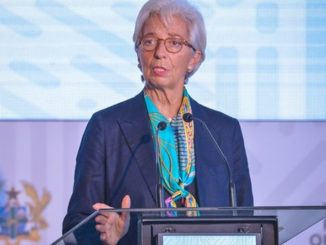
“Many countries across the region will see future debt service payments rise steeply, or remain elevated, over the next two to five years: Ethiopia, Ghana, Kenya, Senegal, and Zambia are illustrative,” said the World Bank’s new report. Kenya’s debt service payment for 2019 has been aggravated by the need to retire three commercial loans maturing in the first six months, including a bullet repayment of about Sh78.3 billion of the debut Eurobond in June.Also within this period, taxpayers are expected to repay two syndicated loans including Sh78.7 billion to Standard Chartered Bank and another Sh37.1 billion to Trade and Development Bank, formerly PTA Bank, bringing the total commercial loans to be paid in six months to Sh200 billion.In total, the country’s external debt redemption for the current financial year stood at Sh250.3 billion. Kenya’s debt repayment rose due to the increase in the stock of expensive loans from the commercial bank as well as sovereign bonds such as the Eurobond.Kenya is among the countries that have dipped into the international capital markets, having issued Eurobonds worth Sh475 billion since its debut in 2014.
According to the World Bank, countries such as Kenya which have not considerably grown their export earnings will struggle to repay their maturing Eurobonds in the next three years.“In the future, higher debt service payments, in part due to bullet repayments falling due on maturing international bond issues, coupled with rising global interest rates, look set to keep debt-to-export ratios on an upward trajectory, exacerbating concerns about debt sustainability,” explained the World Bank. The global lender noted that for countries such as Kenya, Cote d’Ivoire, Ethiopia, Gambia, and Zambia, whose debt service-to-export ratio surpassed 15 per cent, would struggle to repay their external debt. At the end of 2017, the World Bank said a third of nations in the region had a debt service-to-export ratio above 10 per cent. Kenya’s uptake of expensive loans, such as the Eurobond – a debt security issued by a national government and denominated in dollars – and commercial loans from banks have pushed the country’s debt to risky levels.Kenya issued its first Kenya Eurobond in June 2014 by raising $2 billion (Sh200 billion) which was split into two notes. There was a $500 million (Sh51 billion), five-year bond paying an interest rate of 5.875 per cent and a $1.5 billion (Sh153 billion), 10-year note with a yield of 6.875 per cent.
Proceeds from the two Eurobonds that Kenya has so far issued were to be used for budgetary support and retire some syndicated loans that were maturing.However, the bond raised a political storm, with the Opposition, then led by former Premier Raila Odinga, insisting that the money never hit the Government’s coffers at the Central Bank of Kenya. Auditor General Edward Ouko has also cast doubt on the use of the funds from a sovereign bond, sentiments that have put him at loggerheads with the State. “As indicated in the Auditor’s Report for 2014/2015, the receipt of net proceeds from commercial financing (Sovereign/Euro Bond) of Sh215,469,626,036 accounted for in 2014/2015 financial year could not be ascertained as investigations into the receipts, issues, accounting and utilisation of the funds related to the Sovereign/Euro Bond was still on-going as at 30 June 2016,” wrote Mr Ouko in the audit report for 2014/2015.Treasury, in its latest medium-term debt strategy, said it would issue another Eurobond to repay the one that is maturing this year. “The Government also intends to refinance the five-year Eurobond maturing in FY2018/19, through the issuance of bonds in the international capital markets,” it said in one of its documents.Reports have indicated that Treasury had approached the Trade and Development Bank for a syndicated loan of between $800 million (Sh80 billion) and $1 billion (Sh100 billion) to pay off the loan.
The Government’s appetite for borrowing has put the Jubilee administration in the eye of the storm, with President Uhuru Kenyatta, in a recent interview with TV journalists, insisting that close to Sh5.1 trillion borrowed so far had been used to build roads, ports, railways and other infrastructures.The President also argued that as a fraction of the gross domestic product, Kenya’s debt was low compared to Japan’s, a comparison that has been debunked. Most of Japan’s debt, unlike Kenya’s, is domestic loan denominated in their local currency whose payment can be pushed forward. Japan also has a massive reserve of foreign currency from which it can pay off foreign debt.A chunk of Kenya’s expensive external loans are denominated in foreign currencies. In 10 years to September 2018, Kenya’s share of external debt has increased almost six-fold from Sh432 billion to Sh2.6 trillion.
–
Standardmedia.co.ke



